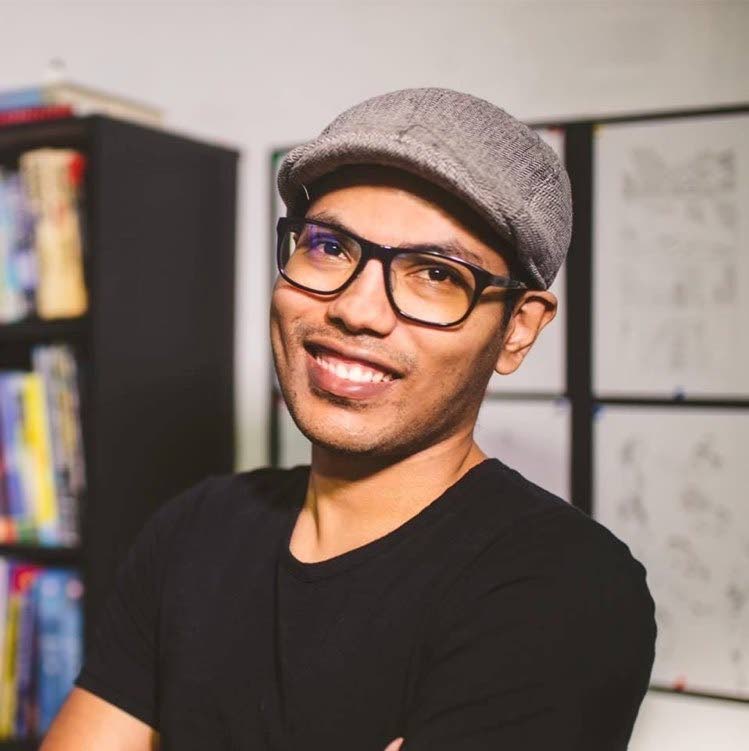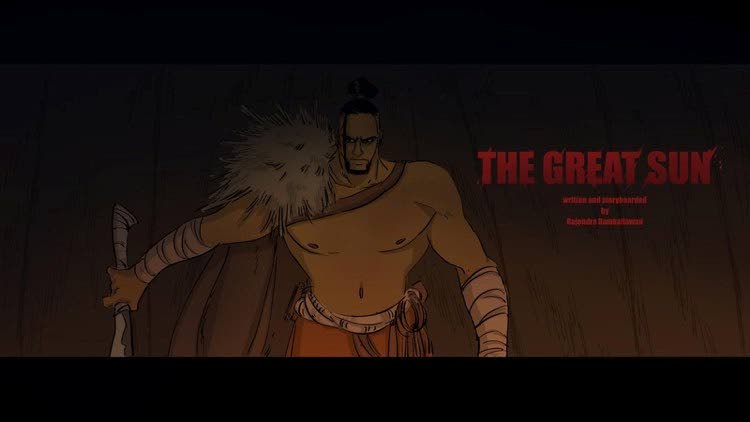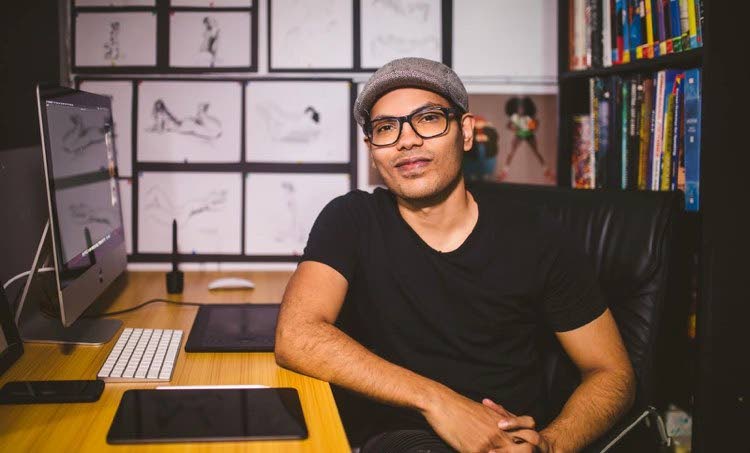Trinidad and Tobago storyboard artist hired on Netflix project

WHEN storyboard artist Rajendra Ramkallawan was told of an opportunity with streaming giant Netflix, he never thought he would get it. He had had so many disappointments in the past there was no reason to think this would not fall through as well.
But everything came together and he has begun work on a project which involves singer/songwriter Wyclef Jean.
Ramkallawan, 30, from Freeport, told Newsday he had long had a love for art and enjoyed drawing comics and anime. He decided he wanted a career in art, but choosing one was difficult.
"When I was younger I didn't know exactly what type of art to make a career out of."
After attending Carapichaima RC and ASJA Boys' College, Charlieville, Ramkallawan did a degree in visual arts at UWI.
At 24, he discovered storyboarding and fell in love with it. A storyboarding artist or story artist creates storyboards (drawings of scenes including characters, action and background) for advertising agencies, television productions or film productions. While following artists on the online art community DeviantArt, Ramkallawan noticed some of their production work on animated Warner Bros films.
"I saw the storyboards and I was like, 'Wow, what's this? They draw the entire movie? This is awesome, I want to learn more about this.'"
He decided to study storyboarding online and took his first course with the online art school Schoolism.

"After the class, I used the tools and knowledge to practise on my own and develop my portfolio."
He said in the beginning, learning the new art was difficult.
"But it doesn't feel hard when you really love something and are passionate about learning it."
He added that he received the right feedback and mentorship. He took more online classes on storyboarding from individual professionals and used the new knowledge to create his own stories.
"I would pretend as though I was making my own movie."
And what stories was he coming up with? He began with fantasy, action-type stories.
"When I was young I was attracted to swords and fighting and dragons. In my process of learning (storyboarding), I learned writing as well. Then I started telling more intimate, emotional stories about the human condition, love."
Ramkallawan said he has been doing storyboarding for about six years, but was still learning, "because there's always stuff to learn."
With his storyboarding skills acquired he was ready to apply them to the working world. That part was not so easy.
He applied twice for a training internship with Disney, but was unsuccessful. On the first occasion, he had a close call, as one of the recruiters told him he was on the shortlist.
"But somebody else got the job."
He also applied to DreamWorks animation studio and the production company Skydance, but these attempts did not work out either.
While seeking his big break he continued to teach storyboarding online. And then ironically the Netflix opportunity came to him.
Ramkallawan explained his friend Rene Holder is a local producer in the animation industry and was trying to pitch one of his properties to international investors. At the pitch, there was a recruiter from Netflix and the recruiter asked if there were any story artists from the Caribbean he could recommend, as there was a production looking for regional artists.

"He gave my name and some other names. The recruiter was really interested in my work and asked me to send my portfolio."
Ramkallawan's portfolio arrived two weeks later and the director saw it, also liked it and arranged an interview, where he pitched the movie and asked if Ramkallawan was interested. He said yes.
A week later they said they would like him to work on the film and he signed the contract.
What was he thinking when all of this was happening?
"I had so many failures in my life, I was expecting things would not work out. I ready to be like, 'Okay, I'll keep doing what I'm doing.' It was cool to have interviews, but as fast as it was happening, it could disappear."
He did not feel happy or celebrate until he actually signed the contract, and only then did he tell his friends and parents; he did not tell anyone about the interviews with Netflix because he didn't want to "blight anything."
"Then it hit me, 'Dude, I make it.' I was not as externally happy-happy and jumping up. I spent so many years working so hard to get here. I matured over that time by failing so much times."
His family began crying and celebrating when he finally told them.
"The universe is like, 'It's time.'"
Last week Ramkallawan began work with Netflix. Back in 2018 hollywood.com reported that Netflix was adapting Fugees star Wyclef Jean's childhood in Haiti into an animated series.
How does the storyboard artist fit into the production of a television series or feature film? Ramkallawan explained a script by the screenwriter is passed on to storyboarding department. The department would then break the script into sections and assign each to a different artist.

Before they start drawing there will be a meeting with the director for him to explain how what he thinks about the script, characters, types of shots, and what they want to do. The storyboard artist would listen to the comments and take notes and then begin the drawing process. A character designer would also draw the characters beforehand, providing a visual reference for the storyboard artists.
"They would take the section and take the words off the page and turn it into visuals or sketches. Then the director would look at drawings and have a better idea of how the film would look, how the characters would interact, and the emotions of the scene."
Based on the director's feedback, the storyboard artists may redraw a scene. Ramkallawan explained the purpose of the process is to deliver the best movie possible.
While a film is still in development the storyboard artists would draw out the entire movie and there would be a "screening" with the storyboards featuring "scratch voices" (temporary actors or the actual actors)
"The producers and the bigwigs would sit down and watch the movie. Once they see that version they would give the director feedback.
If the film is signed off on, the production would start hiring animators, sculptors, and other crew members. Or at that point, the film could be turned down.
"We try to save production as much money as possible."
Because of the pandemic, Ramkallawan has to work from Trinidad on contract, but he has plans eventually to move to Los Angeles and to be hired as an employee, with benefits.
"I'm not married and I don't have kids, so it is easy to come across."
Ramkallawan said the experience has been pretty good so far.
"I like the director and the head of story, who is my direct boss. They are really cool guys. I already pitched my scene and got feedback. It's pretty cool. So far, so good."
As for his original content, Ramkallawan said he would love it if one of the producers asked him to pitch one of his original ideas. He has been storyboarding an entire film and has so far done seven-ten minutes of the projected 90-minute film. He planned to continue working on the project on weekends and he had time.
What advice would Ramkallawan give to aspiring artists?
He said they should be self-aware and find out which type of art they are most passionate about and love the most.
"You are gonna struggle and fail a lot, and if you don't love it, you will probably give up on it. But it is nice to know the art you want to do for rest of your life try."
He added they should try to find as much information as possible on their chosen art, and mentors to learn from.
"Put in the work on one thing only. Don't get distracted by other art in the industry, or other people who want to influence you in other directions such as partying all the time, or skylarking all the time.
"You have to make a lot of sacrifices, especially because you have been dealt the cards of being born in Trinidad, which is not the best place to be for this industry. You will have a lot more walls in front of you compared to other people in the world. To climb those walls you have to make more sacrifices than kids in Canada, US or Europe."
Ramkallawan said the aspiring artists might feel alone or that they are wasting their time.
"But success takes time and sacrifices, and you have to put in the work. Once you put in the work, know it will happen for you in the future."


Comments
"Trinidad and Tobago storyboard artist hired on Netflix project"